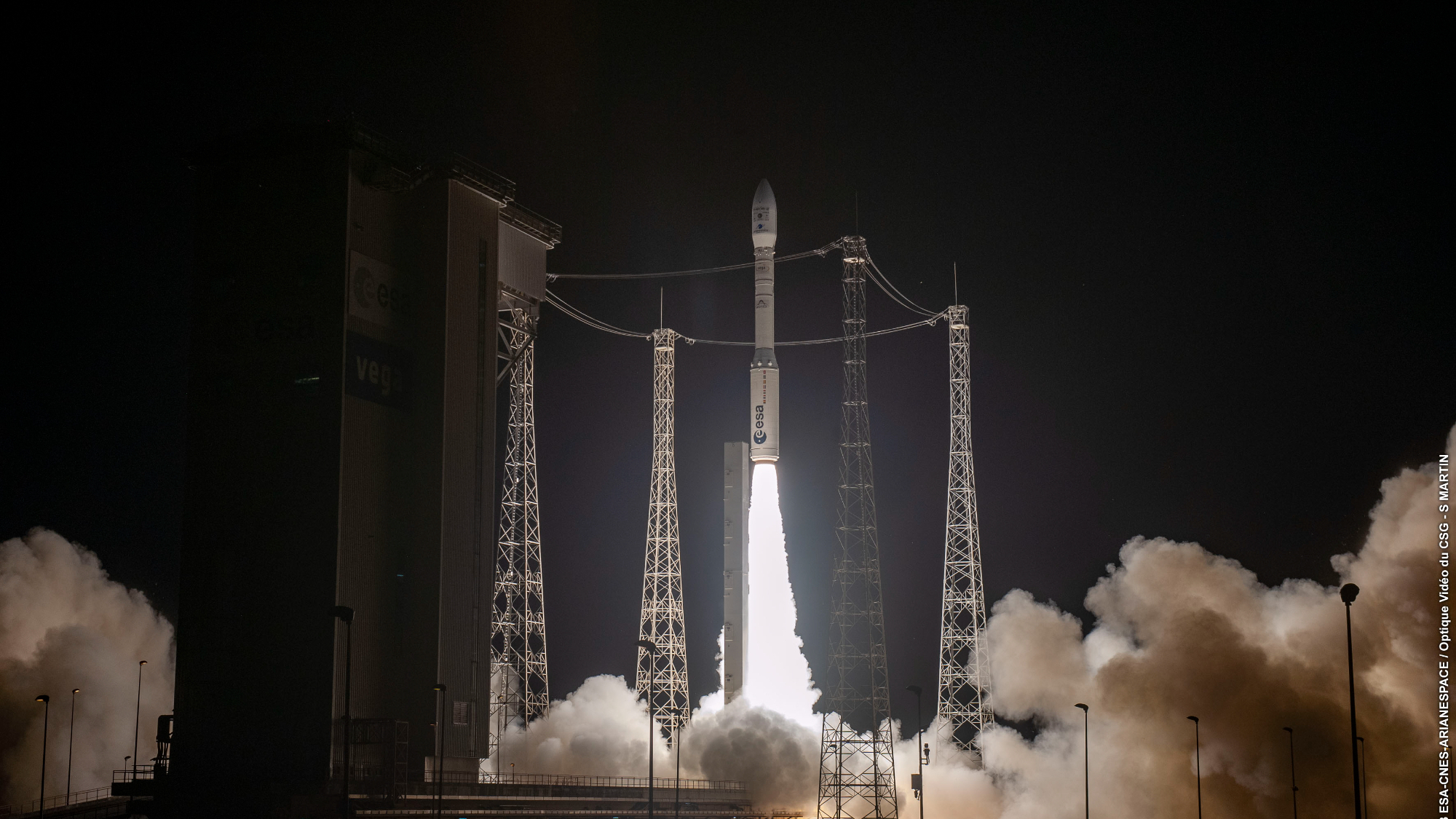
A European Vega rocket launched 12 satellites toward orbit tonight (Oct. 8) on its first mission of the year.
The Vega, which is operated by France-based company Arianespace, lifted off from Europe's Spaceport in Kourou, French Guiana tonight at 9:36 p.m. EDT (0136 GMT on Oct. 8).
The 12 satellites were all deployed on scheduled, being released into low Earth orbit (LEO) by about one hour and 45 minutes after launch, according to Arianespace.
Related: Vega rocket launches Earth observation satellite and 4 cubesats into orbit
Our Flight #VV23 officially is a success! 🚀To learn more, take a look at our press release:https://t.co/JewW70W50z@GISTDA @TASA_Taiwan @AirbusSpace @TyvakNanoSat @Avio_Group @esa @CNES @EuropeSpacePortOctober 9, 2023
The 100-foot-tall (30 meters) Vega is designed to loft relatively small payloads. It's capable of carrying 3,300 pounds (1,500 kilograms) to a circular orbit 435 miles (700 kilometers) above Earth, according to Arianespace's spec sheet.
The Vega debuted in February 2012 and has flown 22 times to date, which explains the name Arianespace gave to tonight's mission: VV23. The flight was the first for the standard Vega variant since November 2021.
Its upgraded, more powerful cousin, the Vega-C, has flown twice since then, in July 2022 and December 2022. The latter of those two Vega-C missions — its second ever — ended in failure, due to a flaw in the nozzle used on the rocket's second stage.
Get the Space.com Newsletter
Breaking space news, the latest updates on rocket launches, skywatching events and more!
Two main payloads went up on VV23: THEOS-2 ("Thailand Earth Observation System-2"), a 919-pound (417 kg) Earth-imaging satellite that will be used by the government of Thailand; and FormoSat-7R/Triton, which was developed by Taiwan's space agency.
The 531-pound (241 kg) FormoSat-7R/Triton "is equipped with the Global Navigation Satellite System-Reflectometry (GNSS-R), which collects signals that bounce off the sea surface," Arianespace wrote in a press release. "It helps scientists calculate the wind field over the oceans. This data will be shared with the global meteorology community, contributing to the forecast of typhoon intensity and trajectory."
VV23 also lofted 10 other payloads for six different customers, which you can read more about in the press release. Altogether, the 12 satellites that launched tonight weigh 2,738 pounds (1,242 kg), according to Arianespace.
Arianespace originally tried to launch the mission on Friday (Oct. 6), but that attempt was called off when a "red status" interrupted the countdown in the final minute due to a measurement on the Vega rocket that was "slightly above its maximum threshold," Arianespace officials said in a statement.
Editor's note: This story was updated at 10 p.m. ET on Oct. 9 with news of successful launch.
Join our Space Forums to keep talking space on the latest missions, night sky and more! And if you have a news tip, correction or comment, let us know at: community@space.com.

Michael Wall is a Senior Space Writer with Space.com and joined the team in 2010. He primarily covers exoplanets, spaceflight and military space, but has been known to dabble in the space art beat. His book about the search for alien life, "Out There," was published on Nov. 13, 2018. Before becoming a science writer, Michael worked as a herpetologist and wildlife biologist. He has a Ph.D. in evolutionary biology from the University of Sydney, Australia, a bachelor's degree from the University of Arizona, and a graduate certificate in science writing from the University of California, Santa Cruz. To find out what his latest project is, you can follow Michael on Twitter.









